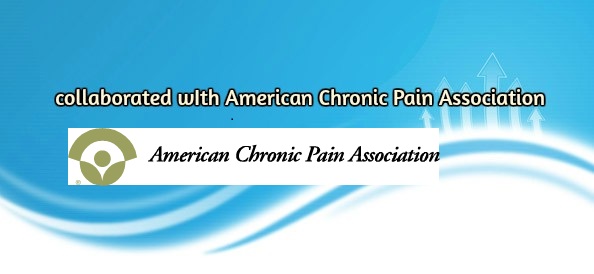Theme: Pain assessment and its management for improvement of the quality of life
Pain management 2016
Welcome Message From Andrea Trescot

Andrea Trescot, MD
Chair of the education committee of World Institute of Pain
Dear fellow Pain Practitioners,
As a practicing pain physician myself, I would like to welcome you to join the 2016 Pain Research and Management Conference in Vancouver, British Columbia. This meeting will be a chance to interact with other pain doctors and researchers from around the world. The program promises to highlight some of the current cutting edge bench research, translational research, as well as practical diagnosis and treatment techniques. Topics to be discussed include the treatment of cancer pain, neuropathic pain, and post-surgical pain, as well as the treatment of rheumatoid arthritis pain, and pain in the elderly. There will be presentations on the relationship between pain and male fertility, spinal cord injuries, pulsed radiofrequency lesioning for cervical radiculopathy, and botulinum toxin for myofascial pain as well as intra-articular use. There will also be discussion on cryoneuroablation, a technique that freezes painful nerves from the head to the toe to provide long-term pain relief.
I will be speaking on topics near and dear to my heart – peripheral nerve entrapments and interventional headache treatment. There are many under-recognized pain problems that are triggered or perpetuated by peripheral nerve entrapments, including face pain, arm pain, chest wall pain, abdominal wall pain, pelvic pain, and lower extremity pain, and we will be discussing the diagnosis and treatment of these nerves. And we have assumed that “migraines” all come from inside the skull, but there are many outside-the-skull headaches that mimic inside-the-skull headaches, and many techniques that not only give temporary symptomatic relief of the headache, but also may offer long-term and potentially permanent relief from this debilitating pain.
There are multiple subject tracks available, including: types of pain, pain medication, pain control techniques, negative effects of pain, non-pharmacologic methods to treat pain, preventive measures for pain, assessment of pain, pain documentation, individual variation in pain response, cancer pain, pediatric pain, and orofacial pain.
So enjoy your time at this meeting, making sure that you network, interact, question, and learn.
Dr.Andrea Trescot
Track 1: Types of Pain
Pain is an unpleasant sensory and emotional experience associated with actual or potential tissue damage, or described in terms of such damage. The International Association for the Study of Pain classified pain according to specific characteristics region of the body involved system whose dysfunction may be causing the pain duration and pattern of occurrence, intensity and time since onset, and Etiology.Woolf suggests three classes of pain nociceptive pain, inflammatory pain which is associated with tissue damage and the infiltration of immune cells, and pathological pain which is a disease state caused by damage to the nervous system or by its abnormal function. Simply pain can be classified as Nociceptive pain - caused by stimulation of peripheral nerve fibers that respond only to stimuli approaching or exceeding harmful intensity. Neuropathic pain caused by damage or disease affecting any part of the nervous system involved in bodily feelings. Psychogenic pain also called psychalgia or somatoform pain, is pain caused by mental, emotional, or behavioral factors. Headache, back pain, and stomach pain are sometimes diagnosed as psychogenic pain. Breakthrough pain is transitory acute pain that comes on suddenly and is not alleviated by the patient's normal pain management. It is common in cancer patients who often have background pain that is generally well-controlled by medications. Incident pain- pain that arises as a result of activity, such as movement of an arthritic joint, stretching a wound, etc. Acute Pain - it is usually associated with clear injury or disease. An example of acute pain is post surgical pain, in which the course of injury is clear, and we can expect the pain to lessen as the surgical wound heals. Chronic pain is more complicated. Although it is often initially associated with an nerve injury, the association is less clear over time. Thus, it may persist well beyond the usual length on an injury seems to be “self perpetuating.”
Related conferences on Types of Pain
2nd International Conference on Clinical Trials, August 22-24, 2016 Philadelphia, USA; 3rd World Congress on Pharmacology, August 08-10, 2016 Birmingham, UK; International Conference on Environmental Toxicology and Ecological Risk Assessment , August 22-23, 2016 Sao Paulo, Brazil; 7th International Conference and Exhibition on Pharmacovigilance , September 19-21, 2016 Vienna, Austria; International Conference and Expo on Generic Drug Market and Contract Manufacturing , Oct 31- Nov 02, 2016 Valencia, Spain; 6th Euro-Global Summit on Toxicology and Applied Pharmacology , October 27-29, 2016 Rome, Italy; 2nd World Congress and Exhibition on Antibiotics , October 13-15, 2016 Manchester, UK; International Conference and Exhibition on Marine Drugs and Natural Products , July 25-27, 2016 Melbourne, Australia; 6th Asia-Pacific Pharma Congress, July 11-13, 2016 Kuala Lumpur, Malaysia; 5th Global Pharmacists Annual Meeting, July 14-16, 2016 Brisbane, Australia; The national conference on pain for frontline practitioners, September 6-10, 2016,The Cosmopolitan of Las Vegas; American Academy of Pain Management 27th Annual Clinical Meeting, September 22 - 25, 2016, San Antonio, Texas,USA; Australian Pain Society 36th Annual Scientific Meeting , March 13 – 16, 2016, Australia,uk; 18th International Conference on Pain Medicine and Management, May 23 - 24, 2016, London UK; Annual NIH Pain Consortium Symposium, May 31st - June 1, 2016, TX,USA; 2nd Annual Global Pain Conference, August 6-7, 2016, Moscow, Russia; International Society for the Study of Pain, The Science of Pain Management, December 8-10, London, United Kingdom; Annual Scientific Meeting of the American Pain Society, May 11-14 2016, Austin, TX, United States; Biennial World Congress of the World Institute of Pain, May 20-23 2016, New York,United States; Pain Week is the nation’s largest pain conference for frontline clinicians with an interest in Pain management, September 6-10 2016, Las Vegas, NV, United States
Track 2: Pain medication
The World Health Organization recommends a pain ladder for managing analgesia. It was first described for use in cancer pain, but it can be used by medical professionals as a general principle when dealing with analgesia for any type of pain. Generally the drugs are classified for pain mainly include, Opioid medicationscan provide short, intermediate or long acting analgesia depending upon the specific properties of the medication and whether it is formulated as an extended release drug. Opioid medications may be administered orally, by injection, via nasal mucosa or oral mucosa, rectally transdermally, intravenously, epidurally and intrathecally. In chronic pain conditions that are opioid responsive a combination of a long-acting or extended release medication is often prescribed in conjunction with a shorter-acting medication for breakthrough pain, or exacerbations. The other major group of analgesics are non-steroidal anti-inflammatory drugs Acetaminophen/paracetamol is not always included in this class of medications. However, acetaminophen may be administered as a single medication or in combination with other analgesics. The alternatively prescribed NSAIDs such as ketoprofen and piroxicam have limited benefit in chronic pain disorders and with long-term use are associated with significant adverse effects. Some antidepressant and antiepileptic drugs are used in chronic pain management and act primarily within the pain pathways of the central nervous system, though peripheral mechanisms have been attributed as well. These mechanisms vary and in general are more effective in neuropathic pain disorders as well as complex regional pain syndrome. Drugs such as gabapentin have been widely prescribed for the off-label use of pain control. Other drugs are often used to help analgesics combat various types of pain, and parts of the overall pain experience, and are hence called adjuvant medications. Gabapentin an anti-epileptic not only exerts effects alone on neuropathic pain, but can potentiate opiates. perhaps not prescribed as such, other drugs such as Tagamet and even simple grapefruit juice may also potentiate opiates, by inhibiting CYP450 enzymes in the liver, thereby slowing metabolism of the drug. In addition, orphenadrine, cyclobenzaprine, trazodone and other drugs with anticholinergic properties are useful in conjunction with opioids for neuropathic pain.
Related conferences on Pain medication
2nd International Conference on Clinical Trials, August 22-24, 2016 Philadelphia, USA; 2nd International Conference and Exhibition on Pain Medicine , May 16-18, 2016 San Antonio, USA; 5th Global Summit on Toxicology and Applied Pharmacology , September 19-21, 2016 Las Vegas, USA; 4th Global Experts Meeting on Neuropharmacology, September 15-17, 2016 San Antonio, USA; International Conference on Anatomy and Physiology, August 11-13, 2016 Crowne Plaza NEC Hotel , Birmingham; 6th Euro-Global Summit on Toxicology and Applied Pharmacology , October 27-29, 2016 Rome, Italy; 4th International Conference and Exhibition on Biologics and Biosimilars, October 26-28, 2015 Baltimore, USA; 2nd International Conference and Exhibition on Pharmacology and Ethnopharmacology , May 02-04, 2016 Chicago, USA; 2nd International Conference on Therapeutic Drug Monitoring and Toxicogenomics, June 09-10, 2016 Dallas, USA; 3rd World Congress on Pharmacology, August 08-10, 2016 Birmingham, UK; American Academy of Pain Management 27th Annual Meeting, September 22-25 2016, San Antonio, TX, United States; Annual Meeting of the American Society of Interventional Pain Physicians, October 15-17 2016, Dallas, TX, United States; Atlantic Pain Conference, September 30, 2016, Halifax, Nova Scotia; Comprehensive Review on Controversies in Pain Management, Australian Pain Society Annual Scientific Meeting, March 13-16 2016, Australia,UK; Interventional Pain Management Techniques Using Fluoroscopic Guidance and Ultrasound, March 11-13,2016, San Antonio, TX, United States of America; American Academy of Pain Management 27th Annual Clinical Meeting, September 22 - 25, 2016, San Antonio, Texas,USA; Annual Scientific Meeting of the American Pain Society, May 11-16 2016, Austin, TX, United States; World Congress of the International Society of Physical and Rehabilitation Medicine, May 29 – June 2, 2016, KualaLumpur, Malaysia; 6th International Congress on Neuropathic Pain, June 15-18 2016, Edinburgh, Scotland, UK; Somatosensory Rehabilitation of pain, February 08-11 2016, Fribourg, Switzerland
Track 3: Adverse effects of NASIDs
While NSAIDs are effective in relieving pain, fever and inflammation, they can cause unwanted side effects. Gastrointestinal side effects such as indigestion, stomach upset or stomach pain are commonly caused by NSAIDs. Use of NSAIDs can also cause ulcers and bleeding in the stomach and other parts of the gastrointestinal tract (gut). This is mainly because these medicines also attack the cyclooxygenase-1 enzyme that protects the stomach lining from normal stomach acid. common side effects of NSAIDs include Salt and fluid retention, Dizziness, Raised liver enzymes, High blood pressure, Less common side effects include: Ulcers of the oesophagus, Heart failure, Hyperkalaemia, Reduced kidney function, Bronchospasm, Skin infections.
Related conferences on Adverse effects of NASIDs
4th International Conference on Medicinal Chemistry & Computer Aided Drug Designing, November 02-04, 2015 Atlanta, USA; 5th International Conference on Forensic Research & Technology , November 17-19, 2016 San Francisco, USA; 5th Global Pharmacists Annual Meeting, July 14-16, 2016 Brisbane, Australia; International Conference and Exhibition on Marine Drugs and Natural Products , July 25-27, 2016 Melbourne, Australia; 4th International Conference and Exhibition on Pathology, July 13-15, 2015 New Orleans, USA; International Conference on Therapeutic Drug Monitoring and Toxicogenomics , June 09-10, 2016 Dallas, USA; Pharma Middle East, November 02-04, 2015 Dubai, UAE; 4th International Conference on Medicinal Chemistry & Computer Aided Drug Designing, November 02-04, 2015 Atlanta, USA; 2nd International Conference on Clinical Trials, August 22-24, 2016 Philadelphia, USA; 2nd International Conference on Therapeutic Drug Monitoring and Toxicogenomics, June 09-10, 2016 Dallas, USA;
Advances in Pain Medicine, January 17 -22 2016, France, Europe; Somatosensory Rehabilitation of PAIN, February 08-11 2016, Fribourg, Switzerland; Interventional procedures for the management of the Chronic pain, May 06-07,2016, Barcelona, Spain; Basic & clinical science for the management of patients with chronic pain, June 17-18 2016 UK; Advances in Pain Medicine Winter Symposium, January 17-22 2016, Tignes Le Lac, France; Annual Conference on Chronic Pain Management, January 29th -1st February 2016, Luxor, Egypt; World Congress of the World Institute of Pain , May 20-23 2016, New York, USA; American Society of Interventional Pain Physicians, October 15-17 2016, Dallas, TX, United States; Second annual cancer pain research consortium conference, April 14-16 2016,Scottsdale, Arizona; Australian Pain Society Annual Scientific Meeting, March 13-16 2016, Australia,UK
Track 4: Pain control techniques
To prepare for any chronic pain coping technique, it is important to learn how to use focus and deep breathing to relax the body. Pain control techniques mainly involved Altered focus.This is a favorite technique for demonstrating how powerfully the mind can alter sensations in the body. Focus your attention on any specific non-painful part of the body and alter pain sensation in that part of the body. Dissociation As the name implies, this chronic pain technique involves mentally separating the painful body part from the rest of the body, or imagining the body and mind as separate, with the chronic pain distant from one’s mind. Sensory splitting This technique involves dividing the sensation into separate parts. Mental anesthesia This involves imagining an injection of numbing anesthetic (like Novocain) into the painful area, such as imagining a numbing solution being injected into your low back.Mental analgesia Building on the mental anesthesia concept, this technique involves imagining an injection of a strong pain killer, such as morphine, into the painful area. Alternatively, you can imagine your brain producing massive amount of endorphins, the natural pain relieving substance of the body, and having them flow to the painful parts of your body.
Related conferences on Pain control techniques
2nd International Conference and Exhibition on Pharmacology and Ethnopharmacology , May 02-04, 2016 Chicago, USA; 2nd International Conference and Exhibition on Pain Medicine , May 16-18, 2016 San Antonio, USA; 2nd International Conference on Therapeutic Drug Monitoring and Toxicogenomics , June 09-10, 2016 Dallas, USA; 2nd World Congress and Exhibition on Antibiotics , October 13-15, 2016 Manchester, UK; African Pharma Congress, June 20-22, 2016 Cape Town, South Africa; 5th Global Pharmacovigilance Summit, April 28-29, 2016 Dubai, UAE; 2nd International Conference on Clinical Trials, August 22-24, 2016 Philadelphia, USA; 5th Global Summit on Toxicology and Applied Pharmacology , September 19-21, 2016 Las Vegas, USA; International Conference and Expo on Generic Drug Market and Contract Manufacturing , Oct 31- Nov 02, 2016 Valencia, Spain; International Conference and Exhibition onMarine Drugs and Natural Products, July 25-27, 2016 Melbourne, Australia;
Pediatric Pain Management State of the Art and Science, September30th - 1st October 2016, Boston, Massachusetts; 15th Annual Pain Medicine Meeting November 17-19,2016, California,USA; Advances in Cancer Pain Management, February 11th 2016, London,UK; Pain Mechanisms and Therapeutics Conference, June 05-09,2016, Taormina, Sicily; World Congress on Low Back and Pelvic Girdle Pain Progress in Evidence Based Diagnosis and Treatment,31st October -3rd November 2016; International Workshop on Advances in the Molecular Pharmacology and Therapeutics of Bone and other Musculoskeletal Diseases, July 02-06 ,2016, Oxford, UK; American Society of Interventional Pain Physicians, October 15-17 2016, Dallas, TX, United States; International Society of the Study of the Lumbar Spine, May 16-20 2016, Singapore, Malaysia; Outcome Measures in Rheumatology, May 11-14 2016, Canada; Australian Pain Society Annual Scientific Meeting , March 13-16 2016, Australia,UK
Track 5: Negative effects of Pain
Although pain can protect us by forcing us to rest an injury or to stop doing something, the experience of being in a state of uncontrolled pain is horrible, frightening, and can have a profound effect on our quality of life. Uncontrolled pain can leads to some altered physiological effects like Increased oxygen consumption, Impaired bowel moment , Cardiovascular effects, Sleep disturbances, Delays mobilization . It turns out that healing is actually delayed when pain caused by cell tissue damage is not relieved. Research shows that uncontrolled pain has an adverse effect on our immune system. Continuous pain also appears to lower our body's ability to respond to stressful situations such as surgery, chemotherapy, and psychological stress. Far-reaching consequences can also result from pain due to damage to a nerve. of This type of unrelieved pain seems to cause changes in the nervous system that contribute to the development chronic pain long after the damage to the nerve has healed.
Related conferences on Negative effects of Pain
3rd World Congress on Pharmacology, August 08-10, 2016 Birmingham, UK; International Conference on Environmental Toxicology and Ecological Risk Assessment August 22-23, 2016 Sao Paulo, Brazil; 2nd International Conference and Exhibition on Pharmacology and Ethnopharmacology , May 02-04, 2016 Chicago, USA; International Conference on Anatomy and Physiology, August 11-13, 2016 Crowne Plaza NEC Hotel, Birmingham,UK; 6th Euro-Global Summit on Toxicology and Applied Pharmacology , October 27-29, 2016 Rome, Italy; 7th International Conference and Exhibition on Pharmacovigilance , September 19-21, 2016 Vienna, Austria; 2nd International Conference on Clinical Trials, August 22-24, 2016 Philadelphia, USA; 2nd World Congress and Exhibition on Antibiotics, October 13-15, 2016 Manchester, UK; 5th Global Pharmacists Annual Meeting, July 14-16, 2016 Brisbane, Australia; 5th International Conference on Forensic Research & Technology , November 17-19, 2016 San Francisco, USA
Advances in Cancer Pain Management, 11th February 2016, London,UK; World Congress on Pain September 26 - 30, 2016,Yokohama, Japan; American Pain Society 35th Annual Scientific Meeting, May 11-14 2016, Texas, US; Pain Mechanisms and Therapeutics Conference, June 05-09,2016, Taormina, Sicily; International Narcotics Research Conference , July 10-14,2016, Bath, UK; American Society of Interventional Pain Physicians, October 15-17 2016, Dallas, TX, United States; 15th Annual Pain Medicine Meeting November 17-19,2016, California,USA; Annual Congress of Clinical Rheumatology, May 12-16 2016, Florida, USA; Interventional Pain Management Techniques Using Fluoroscopic Guidance and Ultrasound, March 11-13,2016, San Antonio, TX, United States of America; International Society of the Study of the Lumbar Spine, May 16-20 2016, Singapore
Track 6: Pain assessment tools
These practice tools are available to help healthcare professionals diagnose and treat pain more appropriately in their patients. Pain is often regarded as the fifth vital sign in regard to healthcare because it is accepted now in healthcare that pain, like other vital signs, is an objective sensation rather than subjective. Most pain assessments are done in the form of a scale. The scale is explained to the patient, who then chooses a score. A rating is taken before administering any medication and after the specified time frame to rate the efficacy of treatment. Pain assessment tools mainly includes pain history or clinical history it includes general medical history and specific pain history intensity, location, pathophysiology etc. Uni-dimensional tool is simple easy and very useful mainly includes verbal descriptor scale, verbal numeric rating scale, visual analog scale wong-baker facial pain rating scale . multidimensional instruments Provides more complex information about pain, For assessing chronic pain and those are Time consuming.
Related conferences on Pain assessment tools
2nd International Conference and Exhibition on Pain Medicine, May 16-18, 2016 San Antonio, USA; International Conference on Environmental Toxicology and Ecological Risk Assessment , August 22-23, 2016 Sao Paulo, Brazil; 2nd International Conference on Therapeutic Drug Monitoring and Toxicogenomics , June 09-10, 2016 Dallas, USA; International Pharmacy Conference, July 11-12, 2016 Philadelphia, USA; 2nd International Conference and Exhibition on Pharmacology and Ethnopharmacology , May 02-04, 2016 Chicago, USA; 2nd International Conference on Clinical Trials, August 22-24, 2016 Philadelphia, USA; 5th International Conference on Forensic Research & Technology , November 17-19, 2016 San Francisco, USA; 5th Global Summit on Toxicology and Applied Pharmacology , September 19-21, 2016 Las Vegas, USA; 3rd World Congress on Pharmacology, August 08-10, 2016 Birmingham, UK; 7th International Conference and Exhibition on Pharmacovigilance, September 19-21, 2016 Vienna, Austria; Cytokines & Inflammation Conference,25-26 January 2016, California, USA; International Conference on Bone and Cartilage ,22-23 February 2016, Paris, France; Immunometabolism in Immune Function and Inflammatory Disease February 21-25 2016, Alberta, Canada,USA; American Society of Interventional Pain Physicians, October 15-17 2016, Dallas, TX, United States; Pain Summit, February 22-28 2016, California, US; International Society of the Study of the Lumbar Spine, May 16-20 2016, Singapore; International Conference on Osteoporosis, Osteoarthritis and Musculoskeletal Diseases, May 23-24 2016, London, UK; Advances in Cancer Pain Management, February 11th 2016, London,UK; International Narcotics Research Conference , July 10-14,2016, Bath, UK; American Pain Society 35th Annual Scientific Meeting, May 11-14 2016, Texas, US; Federation of Clinical Immunology Societies, June 22-25,2016, Massachusetts, USA; Engaging Pain Medicine and Primary Care Teams, February 18-21 2016, Palm Springs, California,USA; Annual Congress of Clinical Rheumatology, May 12-16 2016, Florida, USA
Track 7: Non Pharmacological methods to treat pain
Non-pharmacological approaches may contribute to effective analgesia and are often well accepted by patients. Some simple measures which are sometimes recommended eg, hot or cold packs have not been well studied. Complementary therapies for pain are often sought out by patients, and require evaluation for their potential role in the palliative care setting. Patient education about managing cancer pain has been studied. A systematic review shows that educational interventions can have a modest but clinically significant impact on pain, and that this is an underutilised strategy. Non pharmacological methods used in pain management can be classified in different ways In general; they are stated as physical, cognitive, behavioral and other complementary methods or as invasive or non-invasive mehods. Meditation, progressive relaxation, dreaming, rhythmic respiration, biofeedback, therapeutic touching, transcutaneous electricalnerve stimulation, hypnosis, musical therapy, acupressure and cold-hot treatments are non-invasive methods. The most famous and common method among the invasive methods is acupuncture .It is considered that these methods control the gates that are vehicles for pain to be transmitted to the brain and affect pain transmission or the release of natural opioids of the body such as endorphin.
Related conferences on Non Pharmacological methods to treat pain :
3rd International Conference on Clinical Pharmacy, December 07-09, 2015 Atlanta, USA; 6th Pharmacovigilance Congress, August 01-03, 2016 Toronto, Canada; 2nd International Conference and Exhibition on Pain Medicine , May 16-18, 2016 San Antonio, USA; 5th Global Summit on Toxicology and Applied Pharmacology , September 19-21, 2016 Las Vegas, USA; 4th Global Experts Meeting on Neuropharmacology, September 15-17, 2016 San Antonio, USA; 2nd World Congress and Exhibition on Antibiotics, October 13-15, 2016 Manchester, UK; international Conference on Environmental Toxicology and Ecological Risk Assessment , August 22-23, 2016 Sao Paulo, Brazil; 6th Euro-Global Summit on Toxicology and Applied Pharmacology , October 27-29, 2016 Rome, Italy ; 5th Global Pharmacovigilance Summit, April 28-29, 2016 Dubai, UAE; 3rd World Congress on Pharmacology. August 08-10, 2016 Birmingham, UK
Engaging Pain Medicine and Primary Care Teams, February 18-21 2016, Palm Springs, California,USA; Annual Congress of Clinical Rheumatology, May 12-16 2016, Florida,USA; American Pain Society 35th Annual Scientific Meeting, May 11-14 2016, Texas, US; International Society of the Study of the Lumbar Spine, May 16-20 2016, Singapore; AGA Society for Arthroscopy and Joint Surgery, September 15-17 2016, Basel, Switzerland; Terdisciplinary World Congress on Low Back and Pelvic Girdle Pain Progress in Evidence Based Diagnosis and Treatment, October 31st -3rd November 2016, Singapore, Malaysia International Conference on Bone, Muscle and Joint Diseases, November 07-08 2016, Venice, Italy; International Workshop on Advances in the Molecular Pharmacology and Therapeutics of Bone and other Musculoskeletal Diseases, July 02-06,2016, Oxford, UK; Federation of Clinical Immunology Societies, June 22-25,2016, Massachusetts, USA;
Track8: Pharmacological methods to treat Pain
Pain-relieving drugs, otherwise called analgesics, include nonsteroidal anti-inflammatory drugs, acetaminophen, narcotics, antidepressants, anticonvulsants, and others. NSAIDs and acetaminophen are available as over-the-counter and prescription medications, and are frequently the initial pharmacological treatment for pain. These drugs can also be used as adjuvantes to the other drug therapies, which might require a doctor's prescription. NSAIDs include aspirin, ibuprofen Motrin, Advil, Nuprin, naproxen sodium, and ketoprofen, Orudis KT. These drugs are used to treat pain from inflammation and work by blocking production of pain-enhancing neurotransmitters, such as prostaglandins. Acetaminophen is also effective against pain, but its ability to reduce inflammation is limited. Narcotics handle intense pain effectively, and are used for cancer pain and acute pain that does not respond to NSAIDs and acetaminophen. Narcotics are classified as either opiates or opioids, and are available only with a doctor's prescription. Opiates include morphine and codeine, which are derived from opium, a substance naturally found in some poppy species. Opioids are synthetic drugs based on the structure of opium. This drug class includes drugs such as oxycodon, methadone, and meperidine. Although antidepressant drugs were developed to treat depression, it has been discovered that they are also effective in combating some chronic headaches, cancer pain, and pain associated with nerve damage. Antidepressants that have been shown to have analgesic (pain reducing) properties include amitriptyline Elavil, trazodone and imipramine. Anticonvulsant drugs share a similar background with antidepressants. Developed to treat epilepsy, certain anticonvulsants were found to relieve pain as well. Drugs such as phenytoin and carbamazepine are prescribed to treat the pain associated with nerve damage. Neuroleptic agents in the treatment of pain is limited. However these durgs may be considered for the patients with neuropathic pain . pimozide is durg used to relive from trigeminal neuralgia. Antiepileptic drugs are widely used in pain clinics to treat neuropathic pain. phenytoin is used in the treatment of trigeminal neuralgia. Subsequently, carbamazepine was studied and found to be successful in this alleviating this condition . Local anesthesia is any technique to induce the absence of sensation in a specific part of the body, generally for the aim of inducing local analgesia, that is, local insensitivity to pain, although other local senses may be affected as well. It allows patients to undergo surgical and dental procedures with reduced pain and distress.
Related conferences on Pharmacological methods to treat Pain
5th Global Pharmacovigilance Summit, April 28-29, 2016 Dubai, UAE; 3rd International Conference on Clinical Pharmacy, December 07-09, 2015 Atlanta, USA; 6th Euro-Global Summit on Toxicology and Applied Pharmacology , October 27-29, 2016 Rome, Italy, Pharma Middle East, November 02-04, 2015 Dubai, UAE; 4th Global Experts Meeting on Neuropharmacology, September 15-17, 2016 San Antonio, USA; 2nd International Conference and Exhibition on Pain Medicine , May 16-18, 2016 San Antonio USA; international Conference on Environmental Toxicology and Ecological Risk Assessment , August 22-23, 2016 Sao Paulo, Brazil; 5th Global Summit on Toxicology and Applied Pharmacology , September 19-21, 2016 Las Vegas, USA; 2nd International Conference on Therapeutic Drug Monitoring and Toxicogenomics, June 09-10, 2016 Dallas, USA; 3rd World Congress on Pharmacology, August 08-10, 2016 Birmingham, UK; 5th Global Summit on Toxicology and Applied Pharmacology , September 19-21, 2016 Las Vegas, USA; Pain Mechanisms and Therapeutics Conference, June 05-09,2016, Taormina, Sicily; Engaging Pain Medicine and Primary Care Teams, February 18-21 2016, Palm Springs, California, USA; Therapeutics of Bone and other Musculoskeletal Diseases, July 02-06, 2016, Oxford, UK; Cytokines & Inflammation Conference, January 25-26 2016, California, USA; International Society of the Study of the Lumbar Spine, May 16-20 2016, Singapore; Malaysia; International Conference on Bone and Cartilage, February 22-23 2016, Paris, France; International Workshop on Advances in the Molecular Pharmacology and Therapeutics of Bone and other Musculoskeletal Diseases, July 02-06,2016, Oxford, UK; World Congress on Pain, September 26-30 2016, Yokohama, Japan; American Society of Interventional Pain Physicians, October 15-17 2016, Dallas, TX, United States; American Pain Society 35th Annual Scientific Meeting, May 11-14 2016, Texas, US
Track9: Preventive measures for Pain
Preventive measures for Pain mainly includes the following procedures Most entry-site infections can be managed by oral antibiotics, dressing changes, and local incision and drainage. Superficial infections associated with percutaneous catheters often can be managed without having to remove the device. Deep infections, however, can extend to the intrathecal space and generally require removing the indwelling catheter or subcutaneous injection port, followed by appropriate wound management and antibiotic therapy. The National Surgical Infection Prevention Project has guidelines for preoperative antibiotic prophylaxis for surgical patients. Because of the possibility of catastrophic infection, routine antimicrobial prophylaxis is recommended for all patients receiving a spinal cord stimulator or implanted intrathecal drug-delivery system. Cefazolin, clindamycin, and vancomycin are the drugs of choice. A bacterial infection typically caused by S. aureus, epidural abscess is a severe infection of the epidural space that usually requires emergency neurosurgical intervention. Epidural abscess is treated with laminectomy, abscess drainage, and antibiotics, and most patients recover completely. Early diagnosis can help reduce or avoid permanent neurologic deficits.
Related conferences on Preventive measures for Pain
2nd International Conference on Therapeutic Drug Monitoring and Toxicogenomics, June 09-10, 2016 Dallas, USA; 6th Pharmacovigilance Congress, August 01-03, 2016 Toronto, Canada; 4th International Conference on Medicinal Chemistry & Computer Aided Drug Designing, November 02-04, 2015 Atlanta, USA; 2nd International Conference on Therapeutic Drug Monitoring and Toxicogenomics , June 09-10, 2016 Dallas, USA; 2nd International Conference and Exhibition on Pharmacology and Ethnopharmacology, May 02-04, 2016 Chicago, USA; 3rd International Conference on Clinical Pharmacy, December 07-09, 2015 Atlanta, USA; 2nd International Conference and Exhibition on Pain Medicine, May 16-18, 2016 San Antonio, USA; World Pharma Congress, Oct 31-Nov 02, 2016 Las Vegas, USA; 3rd World Congress on Pharmacology, August 08-10, 2016 Birmingham, UK; 5th Global Summit on Toxicology and Applied Pharmacology , September 19-21, 2016 Las Vegas, USA; Australian Pain Society Annual Scientific Meeting ,March 13-16 2016, Australia,UK; Interventional Pain Management Techniques Using Fluoroscopic Guidance and Ultrasound, March 11-13,2016, San Antonio, TX, United States of America; Cytokines & Inflammation Conference, January 25-26 2016, California, USA; Outcome Measures in Rheumatology, May 11-14 2016, Canada,USA; International Workshop on Advances in the Molecular Pharmacology and Therapeutics of Bone and other Musculoskeletal Diseases, July 02-06,2016, Oxford, UK; World Congress on Pain September 26 - 30, 2016, Yokohama, Japan; Annual Scientific Meeting of the American Pain Society, May 11-16 2016, Austin, TX, United States; International Society of the Study of the Lumbar Spine, May 16-20 2016, Singapore; Outcome Measures in Rheumatology, May 11-14 2016, Canada ; Annual Pain Medicine Meeting, November 17-19,2016, California; Outcome Measures in Rheumatology, May 11-14 2016, Canada; Australian Pain Society Annual Scientific Meeting ,March 13-16 2016, Australia,Uk
Track 10: Assessment of pain management
Pain assessment is critical to optimal pain management interventions. While pain is a highly subjective experience, its management necessitates objective standards of care. The WILDA approach to pain assessment focusing on words to describe pain, intensity, location, duration, and aggravating factors offers a concise template for assessment in patients with acute and chronic pain. Assessment of the patient experiencing pain is the cornerstone to optimal pain management. However, the quality and utility of any assessment tool is only as good as the clinician's ability to thoroughly focus on the patient. This means listening empathically, believing and legitimizing the patient's pain, and understanding, to the best of his or her capability, what the patient may be experiencing. A healthcare professional's empathic understanding of the patient's pain experience and accompanying symptoms confirms that there is genuine interest in the patient as a person. This can influence a positive pain management outcome. After the assessment, quality pain management depends on clinicians' earnest efforts to ensure that patients have access to the best level of pain relief that can be safely provided. Clinicians most successful at this task are those who are knowledgeable, experienced, empathic, and available to respond to patient needs quickly.
Related conferences on Assessment of pain management
2nd International Conference on Clinical Trials, August 22-24, 2016 Philadelphia, USA; International Conference on Environmental Toxicology and Ecological Risk Assessment, August 22-23, 2016 Sao Paulo, Brazil; International Conference on Anatomy and Physiology, August 11-13, 2016 Crowne Plaza NEC Hotel , Birmingham,UK ; African Surgical and Medical Devices Expo, June 20-21, 2016 Cape Town, South Africa; 3rd International Conference on Clinical Pharmacy, December 07-09, 2015 Atlanta, USA; 3rd World Congress on Pharmacology, August 08-10, 2016 Birmingham, UK; 4th Global Experts Meeting on Neuropharmacology, September 15-17, 2016 San Antonio, USA; 2nd International Conference and Exhibition on Pain Medicine , May 16-18, 2016 San Antonio, USA; 4th International Conference and Exhibition on Biologics and Biosimilars, October 26-28, 2015 Baltimore, USA; 5th Global Summit on Toxicology and Applied Pharmacology, September 19-21, 2016 Las Vegas, USA
Annual Scientific Meeting of the American Pain Society, May 11-16 2016, Austin, TX, USA; International Society for the Study of Pain ,The Science of Pain and its Management, December 8-10, London, United Kingdom; Pain Consortium Symposium, May 31st - June 1, 2016,USA; International Society of the Study of the Lumbar Spine, May 16-20 2016, Singapore; Association for the Study of Pain 6th International Congress on Neuropathic Pain, June 15-18 2016, Edinburgh, Scotland, UK; International Workshop on Advances in the Molecular Pharmacology and Therapeutics of Bone and other Musculoskeletal Diseases, July 02-06 2016, Oxford, UK; World Congress on Low Back and Pelvic Girdle Pain Progress in Evidence Based Diagnosis and Treatment, October 31st -3rd November 2016, Singapore, Malaysia; American Pain Society, May 11-16 2016, Austin, TX, United States; Musculoskeletal MRI , September 26-30 2016, Heraklion, Greece; World Congress on Pain September 26 - 30, 2016, Yokohama, Japan
Track 11: Documenting Pain
Documentation of pain management is essential for tracking patient care and for supporting therapeutic treatment. Pain management requires documentation of assessment, interventions, response, and reassessment of pain. Document the patient’s response to pain management, both therapeutic and adverse, as well as the following information specific to pain management. Intensity, quality, location, onset, frequency, diurnal variation, alleviating factors, radiation are the important factors in Documenting pain.
Related conferences on Documenting pain
5th Global Summit on Toxicology and Applied Pharmacology , September 19-21, 2016 Las Vegas, USA; 2nd International Conference on Clinical Trials, August 22-24, 2016 Philadelphia, USA; 4th International Conference and Exhibition on Biologics and Biosimilars, October 26-28, 2015 Baltimore, USA; International Conference on Environmental Toxicology and Ecological Risk Assessment, August 22-23, 2016 Sao Paulo, Brazil; 3rd World Congress on Pharmacology, August 08-10, 2016 Birmingham, UK; International Conference on Anatomy and Physiology, August 11-13, 2016 Crowne Plaza NEC Hotel , Birmingham,UK ; 2nd International Conference and Exhibition on Pain Medicine , May 16-18, 2016 San Antonio, USA; 2nd International Conference on Therapeutic Drug Monitoring and Toxicogenomics, June 09-10, 2016 Dallas, USA; International Society of the Study of the Lumbar Spine, May 16-20 2016, Singapore; International Conference on Clinical Pharmacy, December 07-09, 2015 Atlanta, USA
International Conference on Clinical Pharmacy, December 07-09, 2015 Atlanta, USA; African Surgical and Medical Devices Expo, June 20-21, 2016 Cape Town, South Africa; International Narcotics Research Conference , July 10-14,2016, Bath, UK; World Congress on Pain September 26 - 30, 2016, Yokohama, Japan; Annual Scientific Meeting of the American Pain Society, May 11-16 2016, Austin, TX, United States; International Conference on Bone, International Society for the Study of Pain ,The Science of Pain and its Management, December 8-10, London, United Kingdom; International Workshop on Advances in the Molecular Pharmacology and Therapeutics of Bone and other Musculoskeletal Diseases, July 02-06 2016, Oxford, UK; Annual Congress of Clinical Rheumatology, May 12-16 2016, Florida, USA ; Interventional Pain Management Techniques Using Fluoroscopic Guidance and Ultrasound, March 11-13,2016, San Antonio, TX, United States of America; International Workshop on Advances in the Molecular Pharmacology and Therapeutics of Bone and other Musculoskeletal Diseases, July 02-06 ,2016, Oxford, UK;
Track 12: Individual variation in Pain response
Individual differences in sensory experiences are of profound importance in the treatment of pain. Subjective ratings are essential for the diagnosis and treatment of pain, but profound individual differences in sensitivity complicate treatment. The study of individual differences in pain has only recently been a topic of focused examination. Historically, reliance on subjective reports dampened enthusiasm for such lines of investigation, but the increasing confidence in psychophysical assessment of pain, in combination with increasing capability to explore genetic contributions to pain, has led to a growth in the output of this aspect of pain research. The contributions of functional imaging studies to the determination of the neural mechanisms supporting cognitive and psychological modulation of pain has opened new realms for the investigation of individual differences. However, the development of a full understanding of individual differences in pain remains challenging, due to the myriad of genetic, environmental, psychological, and cognitive variables that can shape such differences.
Related conferences on Individual variation in Pain response
5th Global Summit on Toxicology and Applied Pharmacology , September 19-21, 2016 Las Vegas, USA; 6th Euro-Global Summit on Toxicology and Applied Pharmacology, October 27-29, 2016 Rome, Italy; 2nd International Conference on Therapeutic Drug Monitoring and Toxicogenomics, June 09-10, 2016 Dallas, USA; African Surgical and Medical Devices Expo, June 20-21, 2016 Cape Town, South Africa; 2nd International Conference and Exhibition on Pain Medicine, May 16-18, 2016 San Antonio, USA; 4th Global Experts Meeting on Neuropharmacology, September 15-17, 2016 San Antonio, USA; International Conference on Anatomy and Physiology, August 11-13, 2016 Crowne Plaza NEC Hotel , Birmingham,UK ; 4th International Conference and Exhibition on Biologics and Biosimilars, October 26-28, 2015 Baltimore, USA; 5th Global Summit on Toxicology and Applied Pharmacology , September 19-21, 2016 Las Vegas, USA; 2nd International Conference on Clinical Trials, August 22-24, 2016 Philadelphia, USA; 5th Global Pharmacovigilance Summit, April 28-29, 2016 Dubai, UAE
International Conference and Expo on Musculoskeletal Regeneration, May 05-06 2016, Chicago, USA; Australian Pain Society 36th Annual Scientific Meeting , March 13 -16, 2016, Australia,UK; 18th International Conference on Pain Medicine and Management, May 23 - 24, 2016, London UK; Therapeutics of Bone and other Musculoskeletal Diseases, July 02-06 ,2016, Oxford, UK; Federation of Clinical Immunology Societies, June 22-25 ,2016, Massachusetts, USA; International Society of the Study of the Lumbar Spine, May 16-20 2016 Singapore,Malaysia; Outcome Measures in Rheumatology, May 11-14 2016, Canada,USA ; Annual Scientific Meeting of the American Pain Society, May 11-16 2016, Austin, TX, United States; International Society of the Study of the Lumbar Spine, May 16-20 2016, Singapore; Outcome Measures in Rheumatology, May 11-14 2016, Canada; Annual Pain Medicine Meeting, November 17-19,2016, California,USA
Track 13: Cancer Pain Management
There are several causes of cancer pain, however usually cancer pain happens once a tumor presses on nerves or body organs or once cancer cells invade bones or body organs. Cancer treatments like therapy radiation, or surgery conjointly might cause pain. Cancer pain is acute or chronic. Acute pain is owing to injury caused by AN injury and tends to solely last a brief time. For instance, having an operation will cause acute pain. The pain goes once the wound heals. Within the in the meantime, painkillers can typically keep it in check. Chronic pain is pain caused by changes to nerves. Nerve changes might occur owing to cancer pressing on nerves or owing to chemical produced by a tumor. It may also be caused by nerve changes owing to cancer treatment. The pain continues long once the injury or treatment is over and may vary from delicate to severe. It is there all the time and is additionally referred to as persistent pain. Chronic pain is tough to treat, however painkillers or alternative pain management strategies will usually with success management it.
Related conferences on Cancer Pain Management
5th Global Pharmacovigilance Summit, April 28-29, 2016 Dubai, UAE; 3rd International Conference on Clinical Pharmacy, December 07-09, 2015 Atlanta, USA; 6th Euro-Global Summit on Toxicology and Applied Pharmacology , October 27-29, 2016 Rome, Italy, Pharma Middle East, November 02-04, 2015 Dubai, UAE; 4th Global Experts Meeting on Neuropharmacology, September 15-17, 2016 San Antonio, USA; 2nd International Conference and Exhibition on Pain Medicine , May 16-18, 2016 San Antonio USA; international Conference on Environmental Toxicology and Ecological Risk Assessment , August 22-23, 2016 Sao Paulo, Brazil; 5th Global Summit on Toxicology and Applied Pharmacology , September 19-21, 2016 Las Vegas, USA; 2nd International Conference on Therapeutic Drug Monitoring and Toxicogenomics, June 09-10, 2016 Dallas, USA; 3rd World Congress on Pharmacology, August 08-10, 2016 Birmingham, UK; 5th Global Summit on Toxicology and Applied Pharmacology , September 19-21, 2016 Las Vegas, USA; Pain Mechanisms and Therapeutics Conference, June 05-09,2016, Taormina, Sicily; Annual Scientific Meeting of the American Pain Society, May 11-16 2016, Austin, TX, United States; Therapeutics of Bone and other Musculoskeletal Diseases, July 02-06, 2016, Oxford, UK; Cytokines & Inflammation Conference, January 25-26 2016, California, USA; International Society of the Study of the Lumbar Spine, May 16-20 2016, Singapore; Malaysia; International Conference on Bone and Cartilage, February 22-23 2016, Paris, France; International Workshop on Advances in the Molecular Pharmacology and Therapeutics of Bone and other Musculoskeletal Diseases, July 02-06,2016, Oxford, UK; World Congress on Pain, September 26-30 2016, Yokohama, Japan; Advances in Cancer Pain Management,11th February 2016, London,UK; Australian Pain Society 36th Annual Scientific Meeting , March 13 -16, 2016, Australia,UK;
Track 14: Pediatric Pain management
Chronic pain may be a growing downside among pediatric and adolescents, with some epidemiologic studies indicating that roughly half-hour of youngsters and adolescents expertise pain that lasts for three months or longer. The foremost common pediatric chronic pain complaints mainly migraine repeated abdominal pain, and general contractile organ pain, together with limb pain and back pain. Chronic pain is usually related to practical incapacity. Within the pediatric population this incapacity most often manifests as college impairment, problem maintaining social contacts, slashed participation in recreational activities, impairments in health connected quality of life, and a rise in health care utilization. As a result, these patients actual high prices on the health care system.
Related conferences on Pediatric Pain Management
3rd International Conference on Clinical Pharmacy, December 07-09, 2015 Atlanta, USA; 6th Pharmacovigilance Congress, August 01-03, 2016 Toronto, Canada; 2nd International Conference and Exhibition on Pain Medicine , May 16-18, 2016 San Antonio, USA; 5th Global Summit on Toxicology and Applied Pharmacology , September 19-21, 2016 Las Vegas, USA; 4th Global Experts Meeting on Neuropharmacology, September 15-17, 2016 San Antonio, USA; 2nd World Congress and Exhibition on Antibiotics, October 13-15, 2016 Manchester, UK; international Conference on Environmental Toxicology and Ecological Risk Assessment , August 22-23, 2016 Sao Paulo, Brazil; 6th Euro-Global Summit on Toxicology and Applied Pharmacology , October 27-29, 2016 Rome, Italy ; 5th Global Pharmacovigilance Summit, April 28-29, 2016 Dubai, UAE; 3rd World Congress on Pharmacology. August 08-10, 2016 Birmingham, UK
Engaging Pain Medicine and Primary Care Teams, February 18-21 2016, Palm Springs, California,USA; Annual Congress of Clinical Rheumatology, May 12-16 2016, Florida,USA; International Conference on Osteoporosis, Osteoarthritis and Musculoskeletal Diseases, May 23-24 2016, London, UK; Annual Congress of Clinical Rheumatology, May 12-16 2016, Florida, USA; AGA Society for Arthroscopy and Joint Surgery, September 15-17 2016, Basel, Switzerland; Terdisciplinary World Congress on Low Back and Pelvic Girdle Pain Progress in Evidence Based Diagnosis and Treatment, October 31st -3rd November 2016, Singapore, International Society of the Study of the Lumbar Spine, May 16-20 2016, Singapore; International Workshop on Advances in the Molecular Pharmacology and Therapeutics of Bone and other Musculoskeletal Diseases, July 02-06,2016, Oxford, UK; Pain Society 36th Annual Scientific Meeting , March 13 -16, 2016, Australia,UK;
Track 15:Orofacial Pain management
Orofacial pain may be outlined as pain localized to the region on top of the neck, before of the ears and below the orbitomeatal line, yet as pain at intervals the rima oris.Orofacial pain disorders square measure extremely rife and enervating conditions involving the top, face, and neck. These conditions represent a challenge to the practician since the orofacial region is advanced and so, pain will arise from several sources. The orofacial pain classification is split into physical and psychological conditions. Physical conditions comprise emporomandibular disorders (TMD), that embrace disorders of the articulatio temporomandibularis (TMJ) and disorders of the contractor structures (eg, masticatory muscles and cervical neuropathic pains, that embrace episodic and continuous (eg, peripheral/centralized mediated) pains and neurovascular disorders (eg, migraine).Psychological conditions embrace mood and anxiety isorders. This review focuses on the present views in orofacial pain management. The scope of orofacial pain includes common disorders like dental pain and TMDs, yet as variety of rare pain syndromes. Pain within the orofacial region springs fromseveral distinctive tissues like teeth, meninges, and cornea. This ends up in many distinctivephysiological mechanisms that are well reviewed Because of those distinctive mechanisms and also the demand for specialist data of the advanced anatomy and physiology of the orofacial region designation could also be tough. several patients have consulted multiple clinicians for his or her condition nonetheless stay unknown or with Associate in Nursing incorrect designation.
Related conferences on Orofacial Pain management
3rd World Congress on Pharmacology, August 08-10, 2016 Birmingham, UK; International Conference on Environmental Toxicology and Ecological Risk Assessment August 22-23, 2016 Sao Paulo, Brazil; 2nd International Conference and Exhibition on Pharmacology and Ethnopharmacology , May 02-04, 2016 Chicago, USA; International Conference on Anatomy and Physiology, August 11-13, 2016 Crowne Plaza NEC Hotel, Birmingham,UK; 6th Euro-Global Summit on Toxicology and Applied Pharmacology , October 27-29, 2016 Rome, Italy; 7th International Conference and Exhibition on Pharmacovigilance , September 19-21, 2016 Vienna, Austria; 2nd International Conference on Clinical Trials, August 22-24, 2016 Philadelphia, USA; 2nd World Congress and Exhibition on Antibiotics, October 13-15, 2016 Manchester, UK; 5th Global Pharmacists Annual Meeting, July 14-16, 2016 Brisbane, Australia; 5th International Conference on Forensic Research & Technology , November 17-19, 2016 San Francisco, USA
Advances in Cancer Pain Management, 11th February 2016, London,UK; World Congress on Pain September 26 - 30, 2016,Yokohama, Japan; American Pain Society 35th Annual Scientific Meeting, May 11-14 2016, Texas, US; Pain Mechanisms andTherapeutics Conference, June 05-09,2016, Taormina, Sicily; International Narcotics Research Conference , July 10-14,2016, Bath, UK; World Congress on Pain, September 26-30 , 2016,Yokohama, Japan; 15th Annual Pain Medicine Meeting November 17-19,2016, California,USA; Annual Congress of Clinical Rheumatology, May 12-16 2016, Florida, USA; American Society of Interventional Pain Physicians, October 15-17 2016, Dallas, TX, United States; International Society of the Study of the Lumbar Spine, May 16-20 2016, Singapore
conference series invites chemists, researchers, Professors, scientific communities, delegates, students, business professionals and executives to attend the “International Conference on Pain Research & Management” which is to be held during October 03-04, 2016 in Vancouver, Canada.
Gather with eminent people and experts to share your research by attending Pain management Conference around the theme of "Exploring and acquiring the advances in Pain Research & Management".
In the light of this theme, the conference series aims to provide a forum for international researchers from various areas of Pain, Pain medication, assessment tools and Pain control techniques by providing a platform for critical analysis of new data, and to share latest cutting-edge research findings and results about all aspects of Pain Research & Management. The conference provides a platform to detail the research works of Pain management expertise from various scientific backgrounds and the same can be perceived by young researchers and students.
The conference mainly aims to promulgate knowledge on Pain management and revile the advances in Pain management techniques.Pain Research & Management 2016 would be a perfect venue to share and develop knowledge on key Pain management techniques and Pain research tools. This research examines the world Pain management markets in terms of the challenges faced by market participants and restraints in the industry, the competitive structure in the major markets, the revenue forecasts and growth rates and strategic recommendations. Market Size of Pain management is Roughly $300-400 million a year.
Target Audience
Departmental Managers, Deans, Vice Presidents, Professors from Pain Medicine, Pharmacology technology providers, Pharmacology equipment manufacturers and dealers, Pharmacology laboratory service providers, Pharmacology database and software providers, Biopharmaceutical (drug design and discovery) companies, Pain Medicine research companies and institutes, Pain Management associations.
Conference Highlights
- Pain assessment tools
- Non Pharmacological methods to treat Pain
- Pharmacological methods to treat Pain
- Preventive measures for Pain
- Types of Pain
- Pain Medication
- Adverse effects of NASIDs
- Pain control techniques
- Negative effects of Pain
- Assessment of Pain management
- Documenting Pain
- Individual variation in pain response
- Cancer Pain Management
- Pediatric Pain management
- Orofacial Pain management
- Pain Management Nursing
To share your views and research, please click here to register for the Conference.
To Collaborate Scientific Professionals around the World
| Conference Date | October 03-04, 2016 | ||
| Sponsors & Exhibitors |
|
||
| Speaker Opportunity Closed | Day 1 | Day 2 | |
| Poster Opportunity Closed | Click Here to View | ||
Useful Links
Special Issues
All accepted abstracts will be published in respective Our International Journals.
Abstracts will be provided with Digital Object Identifier by























